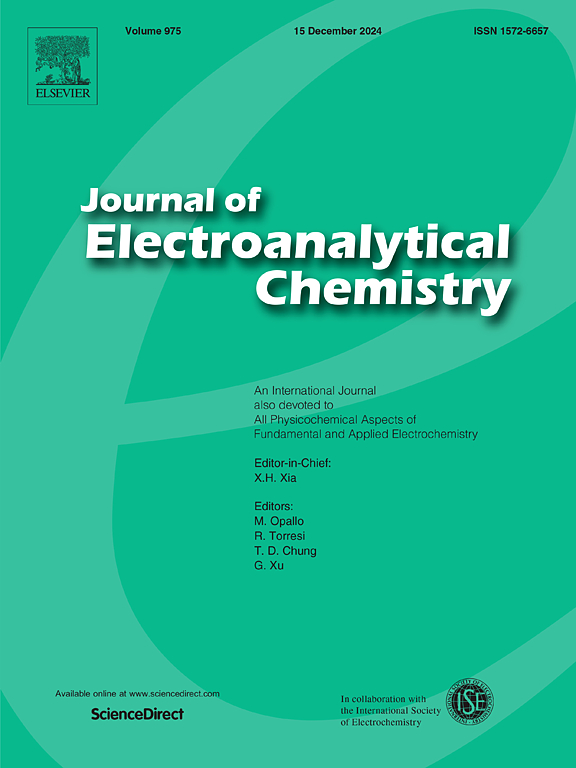Synergistic MoO2@Co3O4 electrocatalysts: A cost-effective approach for efficient alkaline water splitting using electrochemical process
IF 4.1
3区 化学
Q1 CHEMISTRY, ANALYTICAL
引用次数: 0
Abstract
Efficient overall water splitting in alkaline electrolytes remains a critical target for various energy-related applications, necessitating the development of materials having potential of catalyzing hydrogen evolution reaction (HER) and oxygen evolution reaction (OER) simultaneously with high venture and efficiency. This study focuses on the synthesis of affordable non-noble metal-based electrocatalysts using simple and time-efficient methods. Specifically, it highlights the development of MoO2, Co3O4, and MoO2@Co3O4 composite catalysts fabricated via electrodeposition on stainless steel substrates. The synthesized composite materials demonstrated superior electrochemical performance, with the MoO2@Co3O4 composite in a 1:2 M ratio exhibiting significantly enhanced catalytic activity and reduced overpotentials for overall water splitting. The catalyst shows OER and HER activity at 143 mV vs RHE and 177 mV vs RHE over-potentials, which is very low. Also, the catalyst exhibited excellent durability, maintaining stability for up to 23 h in alkaline electrolyte conditions. The synergistic interaction between molybdenum and cobalt oxides was found to facilitate both HER and OER, leading to improved catalytic efficiency at low overpotentials. This approach provides a promising pathway for the integration of robust, cost-effective electrocatalysts, critical for advancing sustainable energy technologies.

求助全文
约1分钟内获得全文
求助全文
来源期刊
CiteScore
7.80
自引率
6.70%
发文量
912
审稿时长
2.4 months
期刊介绍:
The Journal of Electroanalytical Chemistry is the foremost international journal devoted to the interdisciplinary subject of electrochemistry in all its aspects, theoretical as well as applied.
Electrochemistry is a wide ranging area that is in a state of continuous evolution. Rather than compiling a long list of topics covered by the Journal, the editors would like to draw particular attention to the key issues of novelty, topicality and quality. Papers should present new and interesting electrochemical science in a way that is accessible to the reader. The presentation and discussion should be at a level that is consistent with the international status of the Journal. Reports describing the application of well-established techniques to problems that are essentially technical will not be accepted. Similarly, papers that report observations but fail to provide adequate interpretation will be rejected by the Editors. Papers dealing with technical electrochemistry should be submitted to other specialist journals unless the authors can show that their work provides substantially new insights into electrochemical processes.

 求助内容:
求助内容: 应助结果提醒方式:
应助结果提醒方式:


